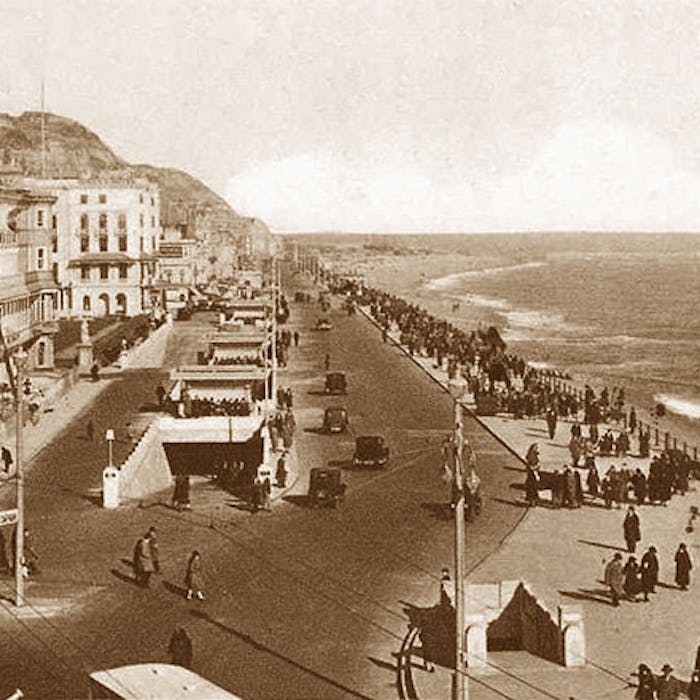
Sidney Little - seaside town's king of concrete
Sidney Little was a municipal civil engineer nicknamed 'the concrete king' due to his great knowledge and passion for the use of reinforced concrete in the 1930's. He was responsible for a number of major building projects with concrete on the south coast of England - including the construction of a new promenade including Britain's first underground car park in Hastings.
Little was born in Carlisle, and was appointed as Borough & Water Engineer for Hastings in 1926, a post he would hold for 24 years, later including the role of 'Town Planning and Development Officer'. Improvement to the town's 'Front Line' sea defences provided the opportunity for Little's creation of the UK's first underground car park in 1931 (just ahead of the one in Blackpool) beneath the rebuilt promenade (pictured). Another major project for Hastings' sea defences was a concrete-panel structure wall alongside the seafront walkway completed in 1934. Known locally as 'bottle alley', it covers 455 metres of promenade along Hastings seafront, and the concrete is embedded with thousands of fragments of coloured glass recovered from broken beer and soft drink bottles.
Little was also responsible for an open-air Olympic-sized swimming pool with seating for 2,500 people in nearby St Leonards. He even created an airport between Bexhill and Hastings which only lasted 11 years and was never used for commercial flights. He also had plans for remodelling the town centre with a double-deck highway system - a precursor of such schemes brought to many cities much later in the 1960's.
Little was unpopular with some people in Hastings because of his willingness to clear areas of historic buildings for his schemes. He was, however, able to drastically improve the water supply to Hastings by building tunnelled aqueducts up to 200ft deep and three reservoirs - as well as provide and improve sewers throughout the town. He designed above-ground seafront shelters constructed from reinforced concrete.
His work extended beyond modernising Hastings. During the Second World War, Little worked with the Admirality to help create the floating concrete Mulberry harbours for the 1944 D-Day landings.
Further reading
Links to external websites are not maintained by Bite Sized Britain. They are provided to give users access to additional information. Bite Sized Britain is not responsible for the content of these external websites.
